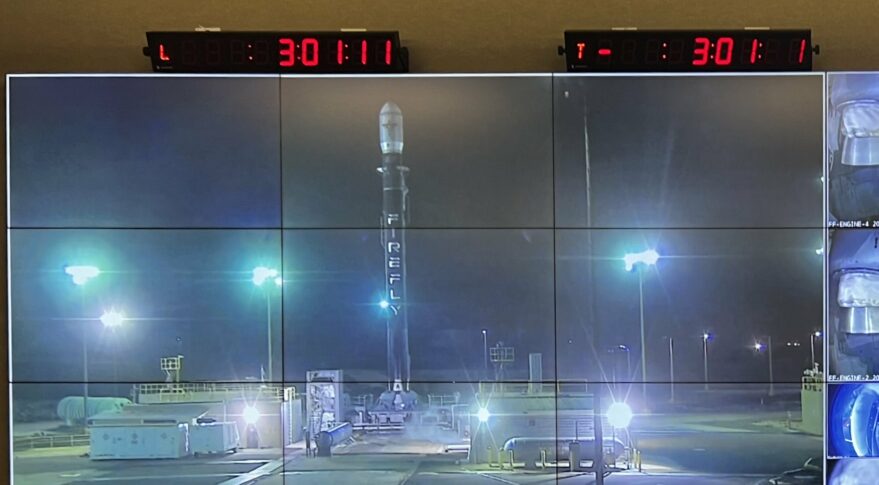
WASHINGTON — A contract the U.S. Space Force awarded last month to Firefly Aerospace and Millennium Space was just the first step toward a goal of launching a space mission on 24 hours’ notice.
A lot of moving parts have to come together to pull this off, said Lt. Col. MacKenzie Birchenough, materiel leader of Space Safari, an office the Space Systems Command established last year to figure out faster ways to field technologies.
Birchenough will oversee the planning of the 24-hour callup mission known as Victus Nox. This will be Space Safari’s second attempt to demonstrate “tactically responsive space,” a capability that Congress has insisted the Space Force should have in case U.S. satellites are shot down in a war.
“The timeline definitely is ambitious,” Birchenough told SpaceNews. “But we think the warfighter really needs this,” she said. “In a time of conflict, if you can’t respond to a threat or augment your capabilities within that 24-hour period, it might be too late. So that’s really what we’re trying to get after and demonstrate with Victus Nox.”
The payload — a Millennium small-satellite bus carrying a space domain awareness sensor — will be delivered in late April, Birchenough said. “That’s our deadline to make sure that everything is ready to go.”
“By the end of April, everything’s got to be done, and at that point, we then move into a standby phase,” she added. The standby phase could last six months or longer.
The timeline is intended to simulate an actual operation when there would be “indications and warnings” that an attack could happen, Birchenough said. “At some point during that standby phase, we would get a phone call and Victus Nox would enter a short activation period of about 60 hours.”
It’s during that 60-hour period that the satellite would be transported to the launch site and integrated with the launch vehicle. “And then we go into an alert phase, which could last a few days or up to a couple of months.”
The 24-hour call-up would come during the alert phase, she said. “And after that we have a goal to be mission capable in a very short time period as well.”
Feedback from the industry
Maj. Jason Altenhofen, deputy chief for Space Safari, said the Victus Nox experiment will help the government and industry figure out more efficient processes for mating satellites and launch vehicles, and aligning schedules.
“We’ve actually conducted quite a few studies and received a lot of feedback from industry on things we ought to consider for future missions,” he said.
The plan is to work with a broad range of launch providers and satellite manufacturers, Altenhofen said. “Having multiple folks ready to go comes down to our acquisition strategy for tactically responsive space,” he added. “We need the right type of contracts in place so we can quickly acquire both space vehicles and launch vehicles on extremely short timelines.”
Some industry executives have suggested that the Space Force could buy responsive launches as a full end-to-end service.
Mark Baird, president of Virgin Orbit National Systems, said the thinking about tactically responsive launch continues to evolve as the industry matures. Buying this capability as a service would be an option the government should consider, he said.
Virgin Orbit is one of several companies positioning to compete for future responsive space missions.
“The tactically responsive space mission is the reason that I came to Virgin Orbit,” said Baird, a retired U.S. Air Force brigadier general. “This is a product that I’ve been pushing since I was in uniform.”
“Obviously we always want the government to go faster, especially in light of the fact that we have a peer competitor threat,” he told SpaceNews. “So tactically responsive space is no doubt going to be a requirement.”
He would advise the Space Force to “strengthen the concept of operations,” said Baird. “How would we employ this? How do we train people? What is the role of Space Force guardians, and the role of the commercial sector? These are questions that have to be worked through.”